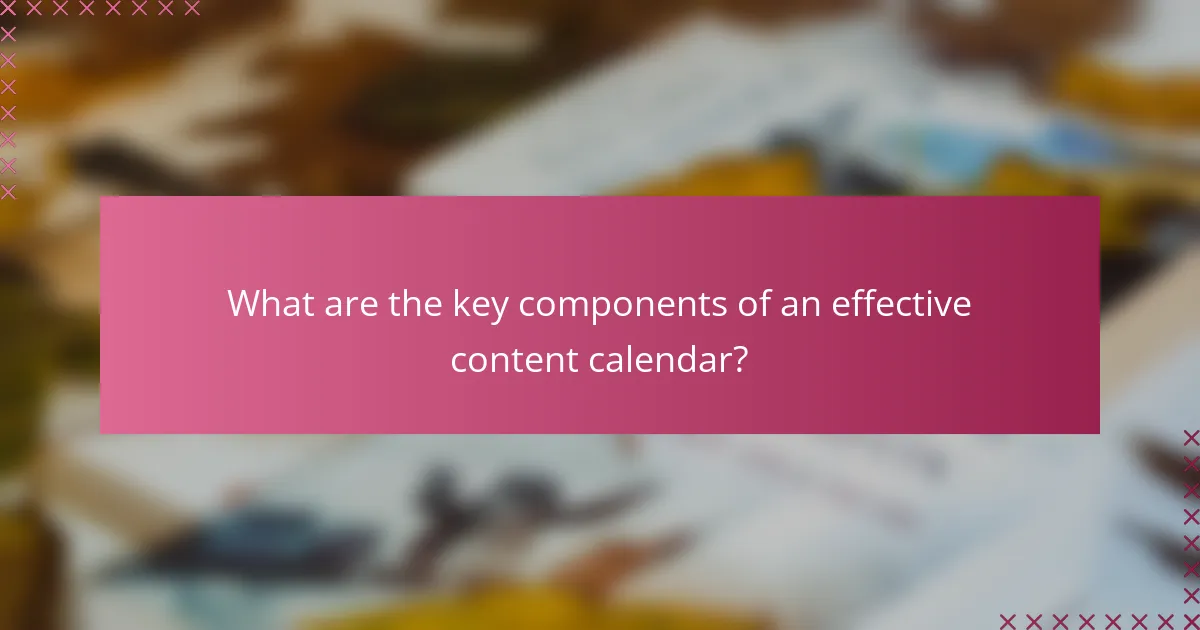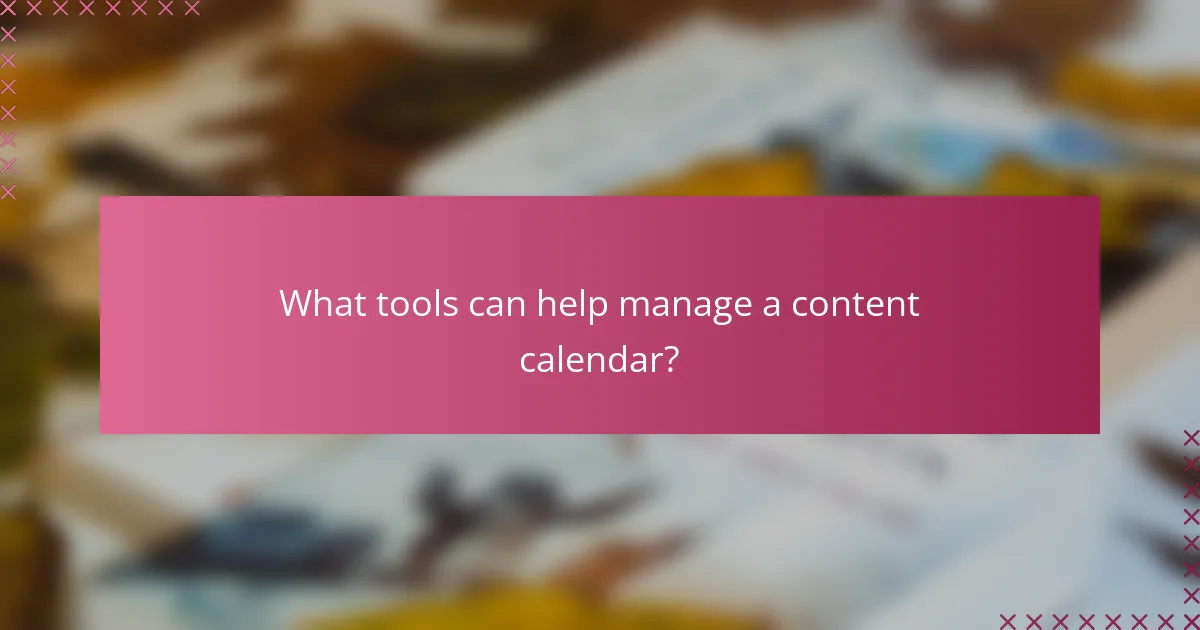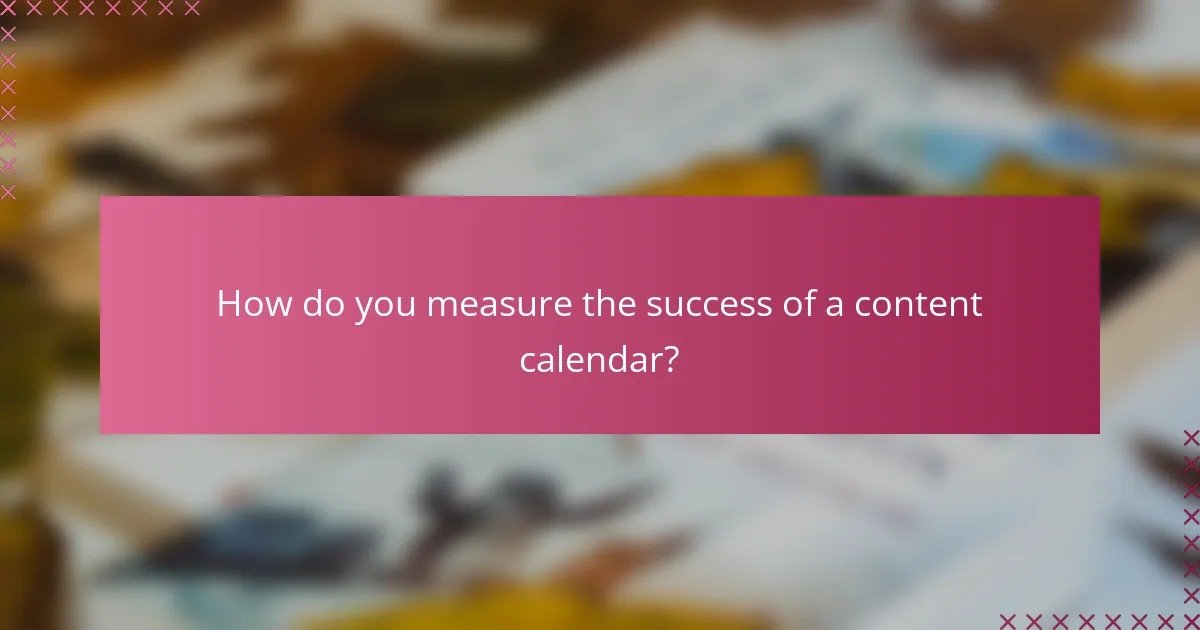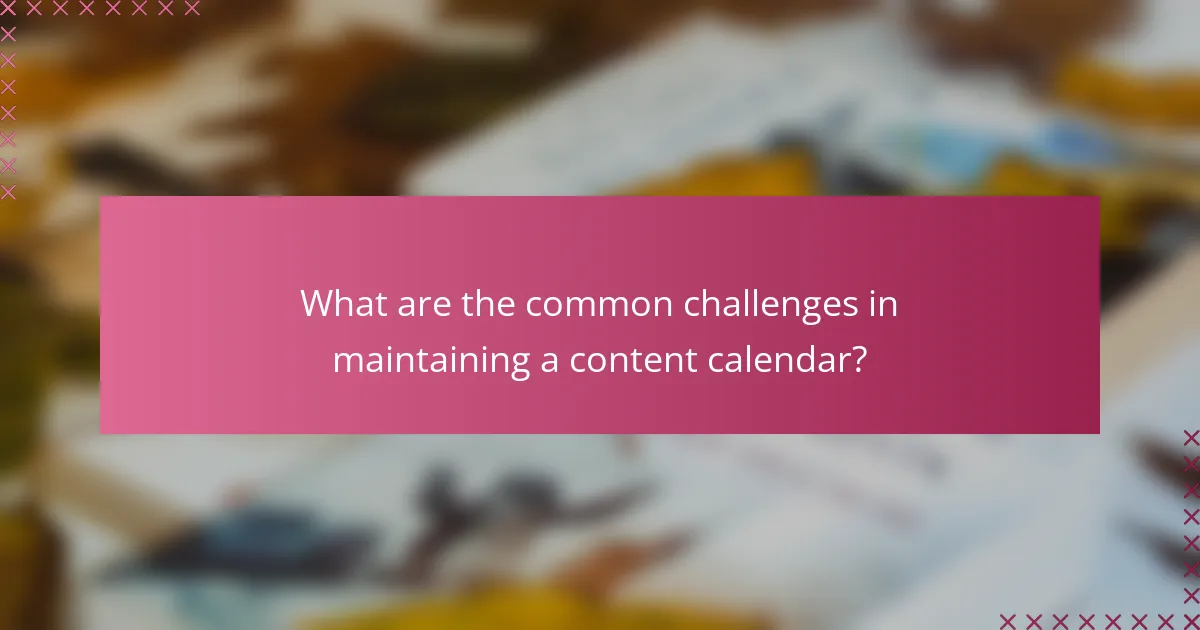A content calendar is an essential tool for enhancing author engagement and ensuring a consistent publishing schedule. By providing a structured framework for planning and accountability, it helps authors stay organized and meet deadlines effectively. Incorporating themes, a publishing schedule, and author assignments streamlines the content creation process, ultimately leading to a more cohesive and engaging content strategy.

How can a content calendar improve author engagement?
A content calendar enhances author engagement by providing a clear framework for planning, accountability, and collaboration. It helps authors stay organized, ensuring they meet deadlines and maintain a consistent publishing schedule.
Increased accountability
With a content calendar, authors have specific deadlines and responsibilities, which fosters a sense of accountability. When each piece of content is scheduled, authors are less likely to procrastinate and more likely to deliver on time.
To maximize accountability, consider setting up reminders or check-ins. Regular updates on progress can motivate authors to stay on track and meet their commitments.
Enhanced collaboration
A content calendar facilitates better collaboration among team members by providing a shared view of upcoming content. This transparency allows authors to coordinate their efforts, share ideas, and avoid overlapping topics.
Utilizing collaborative tools like Google Calendar or Trello can enhance this process. These platforms allow for real-time updates and comments, making it easier for authors to work together effectively.
Structured feedback loops
Implementing a content calendar creates structured opportunities for feedback, which is essential for improving content quality. Authors can schedule time for peer reviews and incorporate suggestions before publication.
Establish a routine for feedback sessions, perhaps weekly or bi-weekly, to ensure that authors receive timely input. This approach not only enhances the content but also fosters a culture of continuous improvement among the team.

What are the key components of an effective content calendar?
An effective content calendar includes content themes, a publishing schedule, and author assignments. These components help ensure consistency, streamline planning, and enhance author engagement, ultimately leading to a more organized content strategy.
Content themes
Content themes serve as the foundation for what topics will be covered over a specific period. They help maintain focus and ensure that the content aligns with the overall goals of the organization or brand. For example, a marketing agency might choose themes like “Social Media Trends” or “Content Marketing Strategies” for a quarterly cycle.
When selecting themes, consider your audience’s interests and current industry trends. This alignment can increase engagement and relevance. Regularly revisiting and adjusting themes based on performance metrics is also advisable to keep the content fresh and appealing.
Publishing schedule
A well-defined publishing schedule outlines when each piece of content will be released. This schedule should account for factors such as peak audience engagement times and seasonal trends. For instance, a travel blog might increase posts during summer vacation months to capitalize on audience interest.
Establishing a consistent frequency, whether weekly or monthly, helps build audience expectations. Tools like Google Calendar or project management software can assist in tracking deadlines and ensuring timely publication.
Author assignments
Author assignments clarify who is responsible for creating each piece of content, fostering accountability and ownership. This can be particularly effective in teams with diverse skill sets, allowing for specialization based on expertise. For example, a technical writer might focus on product documentation while a creative writer handles blog posts.
To optimize collaboration, consider using a shared document or project management tool that allows authors to see their assignments and deadlines. Regular check-ins can help address any challenges and keep projects on track, ensuring that all contributors are aligned with the content calendar’s goals.

How do you create a content calendar for e-commerce?
Creating a content calendar for e-commerce involves planning and organizing content to ensure consistent engagement with your audience. It helps streamline marketing efforts, align with sales goals, and maintain a steady flow of relevant content.
Identify target audience
Understanding your target audience is crucial for effective content planning. Identify demographics such as age, gender, location, and interests to tailor your content accordingly. Utilize tools like surveys or social media insights to gather data about your customers.
Consider creating buyer personas that represent your ideal customers. This will help you visualize their needs and preferences, guiding your content creation to resonate with them effectively.
Set content goals
Establish clear content goals that align with your overall business objectives. Goals can include increasing website traffic, boosting sales, or enhancing brand awareness. Aim for specific, measurable targets to evaluate your success over time.
For instance, you might set a goal to increase email newsletter sign-ups by 20% over the next quarter. This clarity will help you focus your content efforts and measure progress effectively.
Choose content types
Selecting the right content types is essential for engaging your audience. Consider a mix of formats such as blog posts, videos, infographics, and social media updates to cater to different preferences. Each type serves a unique purpose, from educating customers to promoting products.
For example, product tutorials can be effective video content, while blog posts can provide in-depth information about industry trends. Regularly assess which formats perform best and adjust your strategy accordingly to maximize engagement.

What tools can help manage a content calendar?
Several tools can effectively manage a content calendar, enhancing organization and collaboration. Popular options include Trello, Google Sheets, and Asana, each offering unique features suited for different aspects of content planning and execution.
Trello for project management
Trello is a visual project management tool that uses boards, lists, and cards to organize tasks. You can create a board specifically for your content calendar, where each card represents a piece of content, allowing team members to track progress easily.
Consider using labels for content types, due dates for deadlines, and checklists for steps involved in content creation. This visual approach helps maintain clarity and ensures everyone is aligned on project status.
Google Sheets for collaboration
Google Sheets is an excellent choice for collaborative content calendars, allowing multiple users to edit and comment in real-time. You can set up a simple spreadsheet with columns for content titles, publication dates, authors, and status updates.
Utilize color coding to indicate different stages of content (e.g., drafting, editing, published) and share the sheet with your team for seamless communication. This tool is particularly useful for teams that prefer a straightforward, data-driven approach.
Asana for task tracking
Asana is a robust task management tool that helps teams track their work and manage projects efficiently. You can create tasks for each content piece, assign them to team members, and set deadlines to ensure timely publication.
Leverage Asana’s timeline feature to visualize your content calendar over weeks or months. This helps in identifying potential bottlenecks and adjusting workloads accordingly, ensuring consistent content delivery.

How do you measure the success of a content calendar?
Measuring the success of a content calendar involves evaluating various performance indicators that reflect engagement, traffic, and conversions. By analyzing these metrics, you can determine how well your content strategy aligns with your goals and audience preferences.
Engagement metrics
Engagement metrics are crucial for understanding how your audience interacts with your content. Key indicators include likes, shares, comments, and time spent on page. A high level of engagement often signifies that your content resonates with readers, while low engagement may indicate a need for adjustment.
To effectively track engagement, utilize tools like Google Analytics or social media insights. Set benchmarks based on historical data or industry standards, aiming for a steady increase in engagement over time.
Traffic analysis
Traffic analysis focuses on the number of visitors to your content and the sources of that traffic. Monitoring unique visitors, page views, and referral sources can help identify which content types and channels are most effective. Aim for a balanced mix of organic, direct, and referral traffic to maximize reach.
Use tools such as Google Analytics to track traffic patterns. Regularly review your data to identify trends, and adjust your content calendar to capitalize on high-performing topics or formats.
Conversion rates
Conversion rates measure how effectively your content drives desired actions, such as signing up for a newsletter or making a purchase. A successful content calendar should aim for a conversion rate that reflects your business goals, typically ranging from 1% to 5% depending on the industry.
To improve conversion rates, ensure that your content includes clear calls to action and aligns with user intent. A/B testing different content formats or messaging can also provide insights into what drives higher conversions.

What are the common challenges in maintaining a content calendar?
Maintaining a content calendar often presents challenges such as ensuring consistency, managing deadlines, and engaging authors. These issues can lead to missed opportunities and reduced content quality if not addressed effectively.
Inconsistent Posting Schedule
An inconsistent posting schedule can confuse your audience and diminish engagement. To combat this, establish a regular cadence that aligns with your audience’s preferences, whether that’s weekly, bi-weekly, or monthly. Consider using analytics to determine optimal posting times.
Difficulty in Content Planning
Planning content can become overwhelming, especially when trying to align various topics and themes. Break down your content calendar into manageable sections, focusing on key themes for each month or quarter. Utilize brainstorming sessions with your team to generate ideas and fill gaps.
Author Engagement
Keeping authors engaged is crucial for a successful content calendar. Regularly communicate deadlines and provide feedback to maintain motivation. Consider implementing a reward system for timely submissions or high-quality content to encourage participation.
Adapting to Changes
Market trends and audience interests can shift rapidly, making it essential to adapt your content calendar accordingly. Stay flexible by allowing room for spontaneous content that addresses current events or emerging topics. Regularly review and adjust your calendar to stay relevant.
Resource Allocation
Effective resource allocation is vital for maintaining a content calendar. Assess your team’s strengths and weaknesses to assign tasks appropriately. Ensure that you have the necessary tools and budget to support your content creation efforts, such as graphic design software or content management systems.
